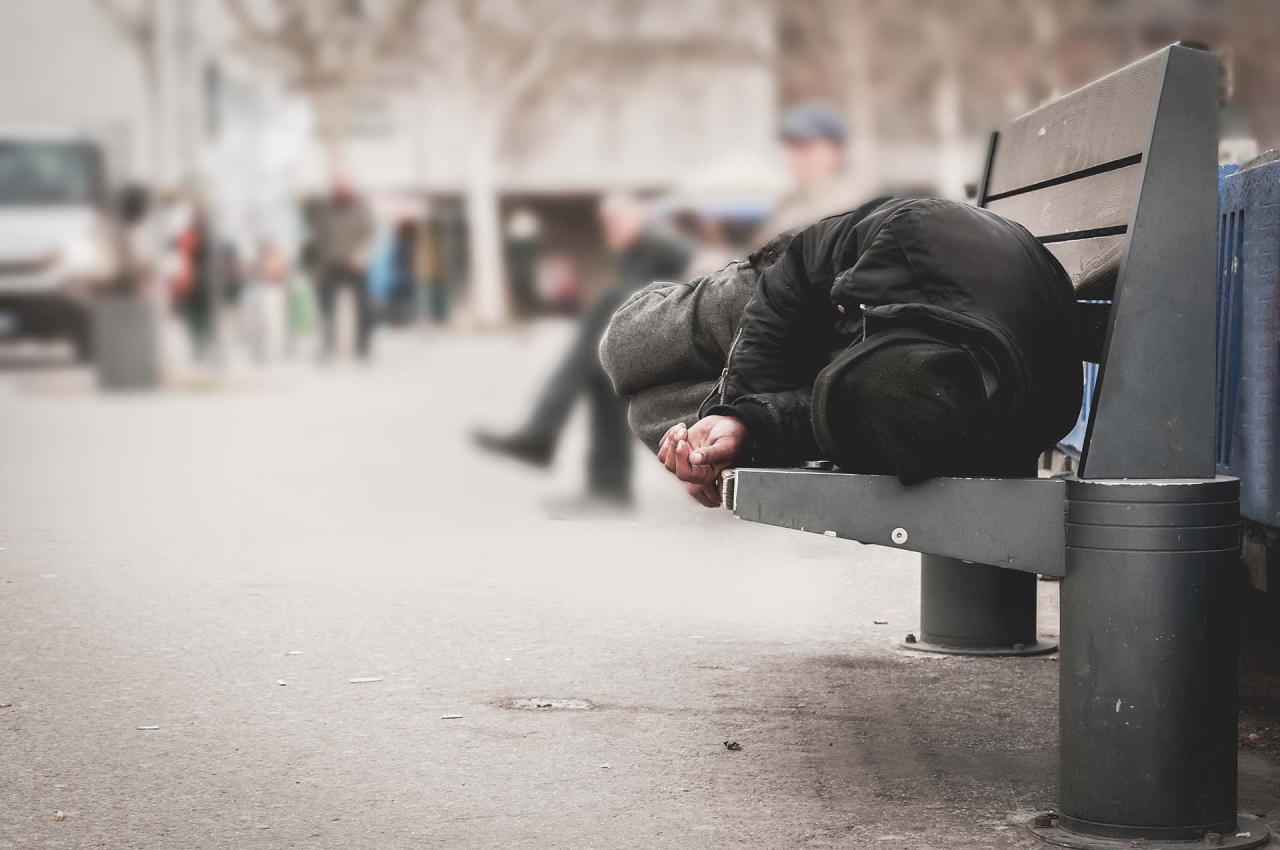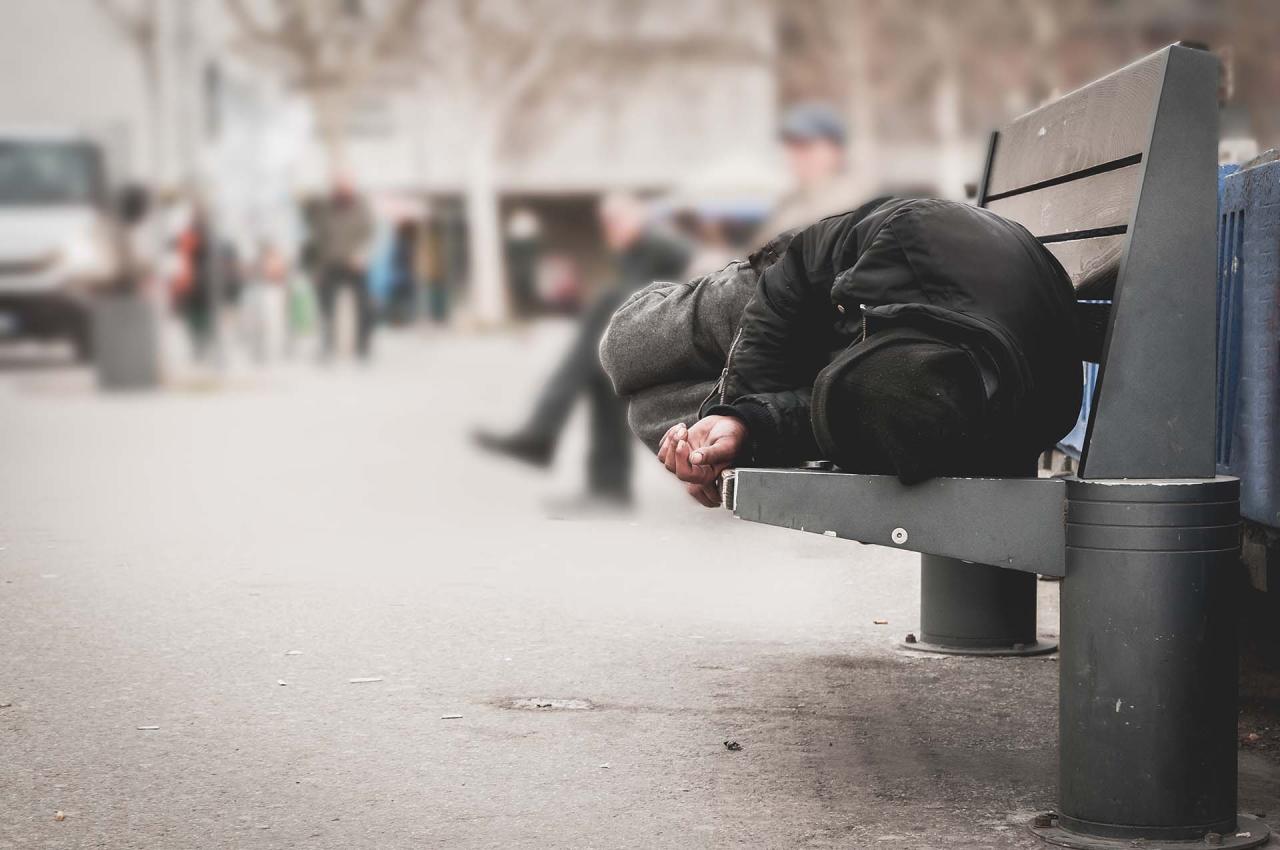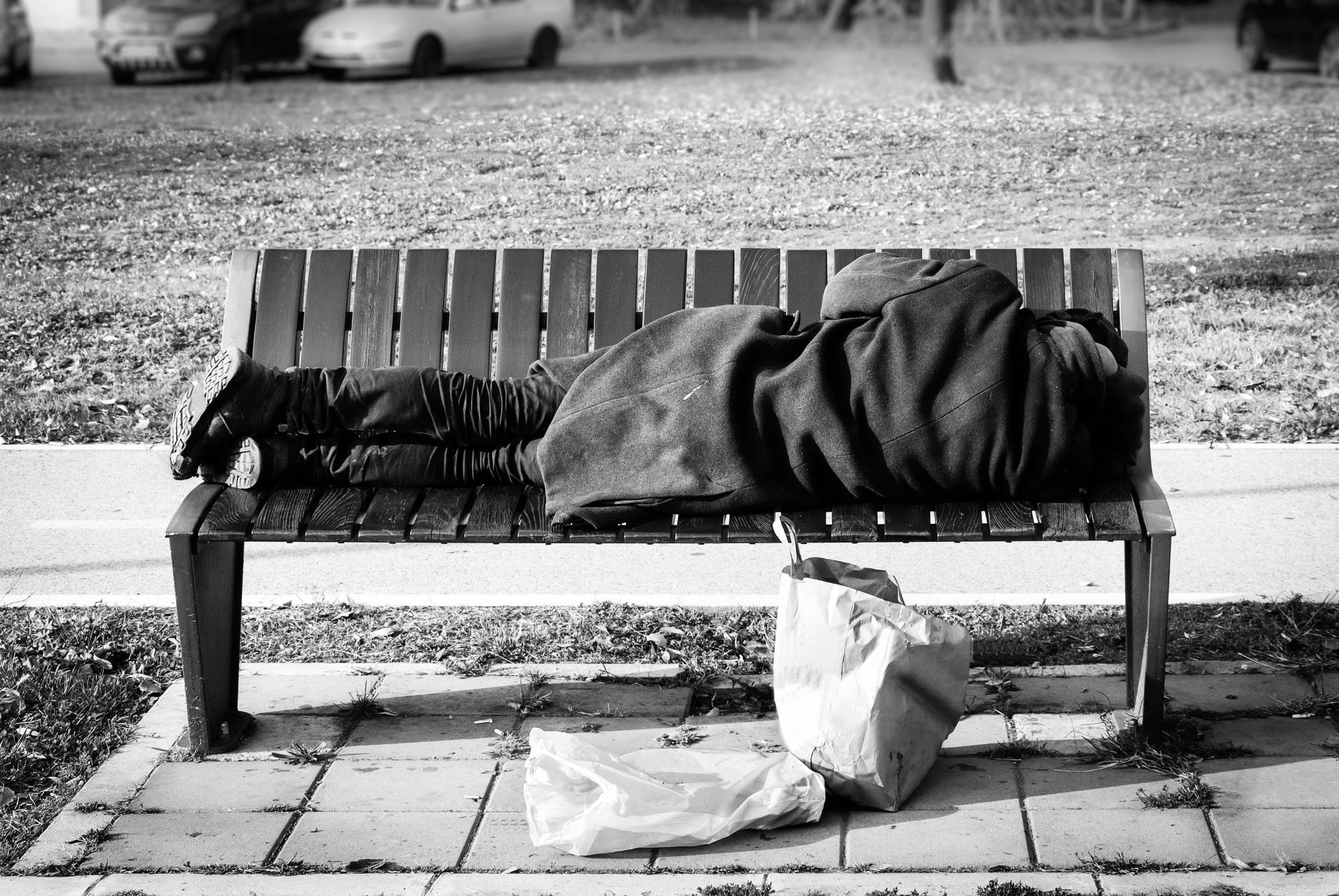
How supporting people at risk of homelessness helps reduce other costs
This Brief quantifies some of the financial savings governments may make in health, justice and welfare costs when they fund support for people who are experiencing homelessness. It also highlights a range of better life outcomes vulnerable people may achieve through the use of homelessness support services.
This Brief incorporates material previously published in AHURI’s Policy Issues Analysis series in 2016.
16 Oct 2022
Although the 2016 Census bundles together 116,000 people as being homeless, people experiencing homelessness are not one homogenous group. Homelessness is caused by a combination of individual risk factors (including domestic and family violence, substance misuse, mental health issues, unemployment and a history of contact with institutions) and structural factors (such as weak labour markets, poor housing affordability and the demographic characteristics of certain geographical locations). Both individual and structural factors need to be addressed in key homelessness policy and strategies to effectively address homelessness.
The vast majority of people who experience homelessness will have only a brief episode and it will occur only once. Their homelessness may be caused by events such as sudden unemployment, illness, or family breakdown. For individuals without behavioural issues, the risk of becoming and remaining homeless is more closely tied to the condition of local housing and labour markets. The chance of becoming homeless is greater in regions with higher median rents and slack labour markets.
In contrast, chronic homelessness is defined as ‘an episode of homelessness lasting six months or longer or multiple episodes of homelessness over a 12-month period or greater'. In developed countries approximately 15 to 25 per cent of the homeless population is chronically homeless.
People who experience chronic homelessness are likely to have ‘complex needs’, experiencing one or more of a range of mental and physical health issues including a history of abuse or trauma, addictions and literacy problems. For those with risky behaviours—drug use and alcohol dependence—the impact of housing and labour markets are uniform across these risk groups, suggesting it is less influential in determining homelessness.
Wider impacts of homelessness
While becoming homeless has terrible impacts and costs on individuals, it also increases costs for governments. Homelessness programs do bring cost benefits for governments. AHURI research shows the average annual costs to government for health, justice, and 'child placed in out-of-home' care costs was $25,343 per homeless person in the year before they accessed case managed support (in 2010 dollars). In contrast, the annual average cost to government for the whole Australian population for these services was $2588 per person.
In the year before they accessed support, clients of specialist homelessness services were heavy users of non-homelessness services such as health, justice and welfare services when compared with the Australian population average.
The health, justice and welfare costs (in 2010$)
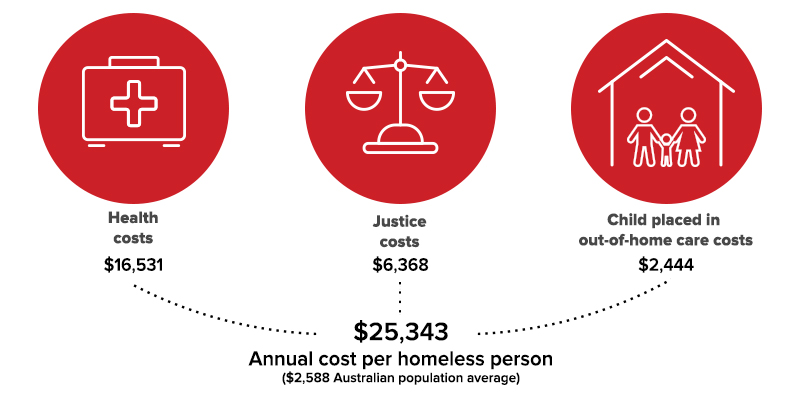
*AUST. POPULATION AVERAGE - Health costs: $2,024. Justice costs: $463. Child placed in out-of-home care (per person aged over 17 years): $101. TOTAL: $2,588.
The supported accommodation costs (in 2010$)
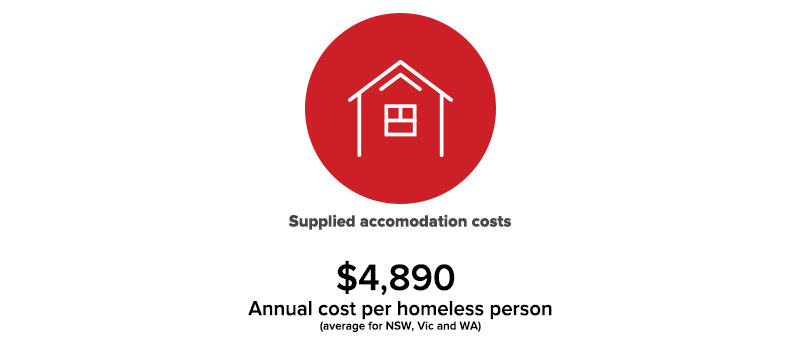
The reduced health, justice and welfare costs (in 2010$)
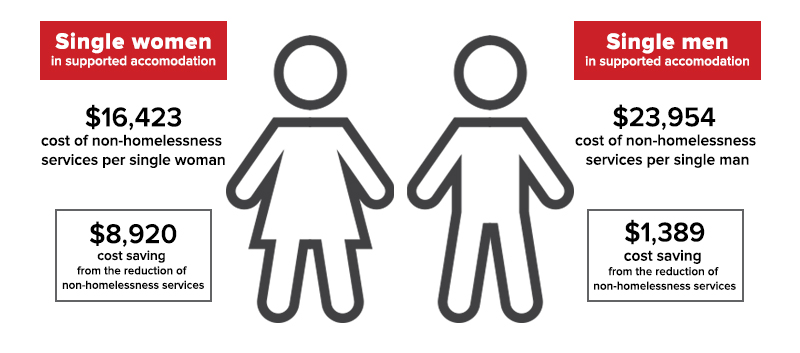
Source: Zaretzky, K., Flatau, P., Clear, A., Conroy, E., Burns, L. and Spicer, B. (2013) The cost of homelessness and the net benefit of homelessness programs: a national study, AHURI Final Report no. 205 and Zaretzky, K. and Flatau, P. (2013) The cost of homelessness and the net benefit of homelessness programs: a national study, AHURI Final Report no. 218.
Other benefits of homelessness support services
Although there are economic benefits for the community, most importantly homelessness support services have an essential role in delivering better life outcomes for vulnerable people. The WA Department of Housing showed that 91 per cent of people who accessed a homelessness support service (between May 2010 and June 2011) were still housed 12 months later.
AHURI research also revealed that of people who were case managed by a homelessness support service (including single men, single women and tenancy support clients), 38 per cent believed that without help they would have ended up as primary homeless (e.g. sleeping rough); 17 per cent would have had poorer mental/ emotional health outcomes; 11 per cent would have had poorer physical health; and 10 per cent believed they would be dead.
What are the aims of homelessness policies?
Ensuring people at risk of homelessness are able to access and maintain appropriate accommodation and other necessary services (such as mental health services or drug and alcohol rehabilitation) are key components of effective homelessness policy.
Further AHURI research shows getting people experiencing homelessness, or who are at risk of homelessness, into public housing has a significant impact in reducing health service use, both in terms of the proportion of people using health services, and the frequency and duration of health service use. For example, getting housing reduces the number of days clients who required psychiatric care spent in hospital, from an average of 31.9 days per person/per year in the year prior to being housed to 25.9 days per person/per year in the year after entering their tenancy—an 18.8 per cent decrease.
This Brief incorporates material previously published in AHURI’s Policy Issues Analysis series.

